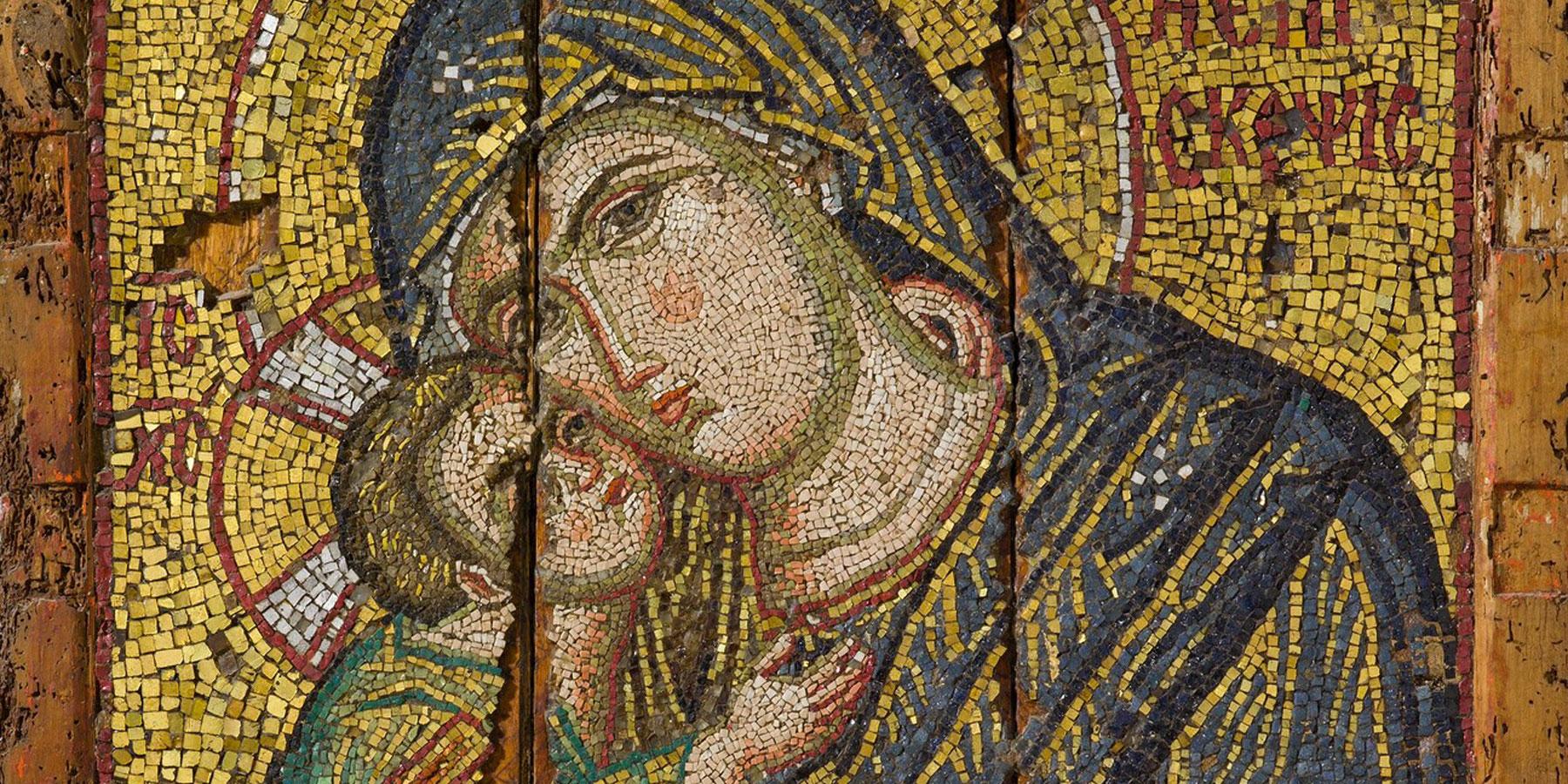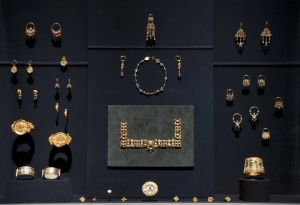Daily life in Byzantium was enhanced by secular works of art for the home. Nymphs, goddesses, and other pagan subjects became decorative motifs, appearing on domestic objects such as dinnerware. The wealthy dined from silver plates in rooms lit with oil lamps made of bronze. Most people used ceramic tableware, often enlivened with imagery related to favorite pastimes such as hunting, music making, and dancing. Unlike the ancients, elite Byzantines used forks, which struck Western Europeans as strange. A Byzantine princess married to the son of a Venetian doge in 1004 probably prompted the Italian monk Peter Damian to write, "Such was the luxury of her habits . . . that she did not deign to touch her food with her fingers, but would have it cut up into small pieces which she would impale on a certain golden instrument with two prongs and thus carry to her mouth."
The elite adorned themselves with jewelry and silk garments studded with gems and pearls, largely ignoring church moralists’ condemnation of excessive luxury. Perfume bottles attest to the popularity of fragrances. The 11th-century empress Zoe and her sister converted part of the imperial palace into a workshop where herbs were boiled to make perfume. The pleasures of life also included popular literature such as the Romance of Alexander, a highly fictionalized account of the military campaigns and adventures of Alexander the Great. The manuscript shown in the slideshow above is the most lavishly illustrated copy known.










